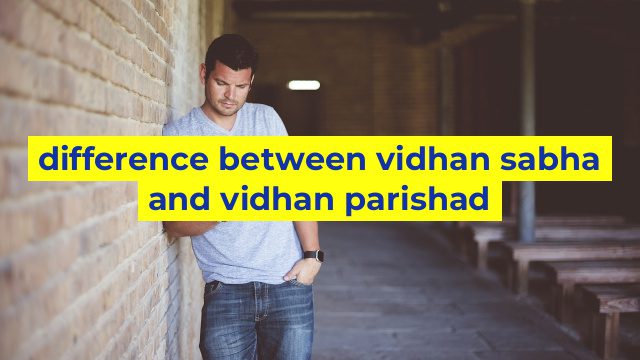Understanding the Difference Between Vidhan Sabha and Vidhan Parishad
India has a complex political structure with several layers of governance. The legislative assembly, popularly known as Vidhan Sabha, and the legislative council, known as Vidhan Parishad, are two essential components in this structure. Understanding the difference between these two bodies is crucial for anyone who wants to grasp the functioning of the Indian political system.
Vidhan Sabha
The Vidhan Sabha is the lower house of the state legislature. This body is elected by the people of the state and comprises members, commonly known as MLAs (Members of Legislative Assembly). The primary function of Vidhan Sabha is to discuss and approve bills and laws proposed by the state government. These bills are then sent to the upper house, Vidhan Parishad, for their validation, if necessary.
Vidhan Sabha also has the power to ask questions to the government and hold it accountable. Members can raise concerns on behalf of their constituencies, and if the majority agrees, they can initiate a debate on the issue.
Vidhan Parishad
Vidhan Parishad is the upper house of the state legislature and is elected indirectly by an electoral college consisting of elected members of Vidhan Sabha, local bodies, and teachers. The primary function of Vidhan Parishad is to review bills and laws passed in Vidhan Sabha and provide their inputs. If the majority of members agree with the bill, it is approved and sent to the governor for their signature.
Vidhan Parishad also acts as a check on Vidhan Sabha’s power. If they feel that a bill proposed by the lower house is not in the best interest of the state, they can make suggestions and propose amendments. Additionally, Vidhan Parishad also functions as a forum to provide a platform for the social and intellectual members of society to contribute to the state’s development.
Key Differences
The primary difference between Vidhan Sabha and Vidhan Parishad is their power structure. Vidhan Sabha is directly elected by the people, while the members of Vidhan Parishad are elected indirectly. Another key difference is that Vidhan Sabha has more power than Vidhan Parishad. For example, Vidhan Sabha has the authority to pass a vote of no confidence against the government, while Vidhan Parishad does not have this power.
In conclusion, both Vidhan Sabha and Vidhan Parishad are crucial components of the Indian political system. Both these bodies work in tandem to ensure that laws and bills are passed in the best interest of the state’s people. Understanding their functions and differences is key to understanding how the Indian governance system works.
Table difference between vidhan sabha and vidhan parishad
| Parameter | Vidhan Sabha | Vidhan Parishad |
|---|---|---|
| Composition | Directly elected by the people | Indirectly elected by MLAs, local bodies and governor nominees |
| Functions | Legislative functions | Advisory and revisory functions |
| Powers | Can introduce and pass bills | Cannot introduce or pass bills |
| Term | 5 years | 6 years |
| Membership | Varies from state to state | Usually around 1/3 of the Vidhan Sabha’s strength |
